How to See the Best of Costa Rica’s Rain Forests — From Mesmerizing Cloud Forests to Tropical Oases Bursting With Wildlife
Here’s your definitive guide to the many rain forests of Costa Rica, including when to go and what to pack.
Rain is not what we usually look for on a vacation — unless we’re exploring Costa Rica, where rain forests make up more than 50% of the country’s area. And while there are dry as well as rainy seasons, the effects of weather can be seen year-round in the trees, plants, birds, and wildlife of this fascinating country. Costa Rica truly is rich in beauty, and visitors can appreciate it whether they choose a camping adventure or a stay at a plush lodge.
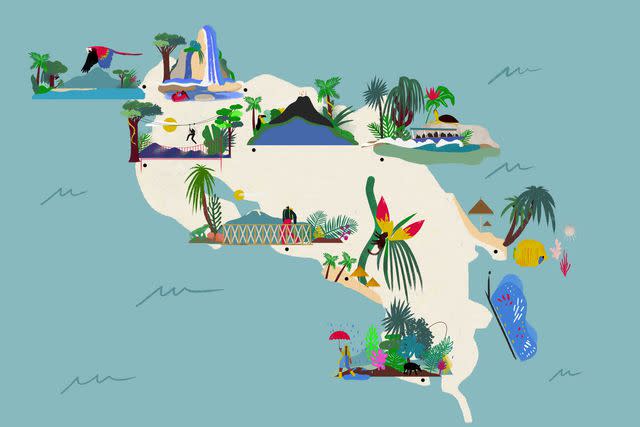
Michela Buttignol/Travel + Leisure
What Is a Rain Forest?
Rain forests come in a variety of forms, and Costa Rica is home to six different types, highlighting the country’s biodiversity and providing habitats for a wide range of flora and fauna specific to each locale.
Tropical rain forests are lush, wet areas with dense canopies and massive trees where wildlife thrives from the forest floor to the branches above, with more than 200 inches of rain annually. Tropical dry forests — yes, sounds like a contradiction — receive less rainfall. They’re located on lower elevations and in parts of Costa Rica that are drier, mainly in the Nicoya and Guanacaste regions. Lowland Rain forests feature wet, hot weather, rivers, streams, tall trees, and short dry seasons.
Cloud forests, with their ethereal name and appearance, are found at high elevations where they are shrouded in low-hanging clouds and fog. Located near bodies of water and marshland, Riparian Forests are humid, providing habitats for both aquatic and land animals. Also near water, mangrove swamps form where freshwater and saltwater meet and where forests transition from dry to wet.
Travel Tips and When to Visit
Diego Oviedo, general manager at Botánika Osa Peninsula located on Costa Rica’s Pacific Coast, pointed out that National Geographic described the Osa Peninsula’s tropical lowland rain forest as “the most biologically intense place on earth.” “This type of lowland rain forest is the perfect destination for families, honeymooners, birdwatchers, photographers, and adventure travelers, as well as those looking for a secluded and relaxing place to stay,” he said.
At Origins Luxury Lodge, set high on a mountainside in northern Costa Rica, naturalist Juan Pablo Potoy takes guests on walking tours through the rain forest at night to see nocturnal birds and amphibians, reptiles, and mammals: “You hear the songs of the different species — a true concert in nature.”
Pack rain gear, ponchos, rubber boots or closed shoes that are good for hiking and walking, insect repellent, sunblock, binoculars, and reusable water bottles.
Both Potoy and Oviedo advise guests to prepare for their rain forest tours by wearing rain gear, ponchos, rubber boots or closed shoes that are good for hiking and walking, insect repellent, and sunblock. They also suggest bringing binoculars and water bottles. When touring any of Costa Rica’s rain forests, guides are helpful for safety, but also for pointing out and identifying birds and wildlife along the way.
Is there an ideal time to visit? Opinions vary. “Although most visitors prefer our dry season between November and April, the truth is that any time can be a good time to visit the rain forests of Costa Rica,” Oviedo said. “For example, our rainiest months are September and October, but that also happens to be the best time to see the humpback whales and their baby whales in the Golfo Dulce.” Potoy suggested visiting between the months of February and May. So, there you go — whenever you visit Costa Rica, it will be the right time depending on what you’re after.
Costa Rica’s Must-see National Parks and Rain Forests
Costa Rica protects its rain forests and wildlife by creating national parks and conservation areas to preserve them for residents, visitors, and future generations. More than 25% of Costa Rica consists of national parks and protected regions. As diverse as the country itself, many of the parks contain several different types of rain forests. These are just a few of the nearly 30 national parks to consider for your visit to Costa Rica.
Manuel Antonio National Park
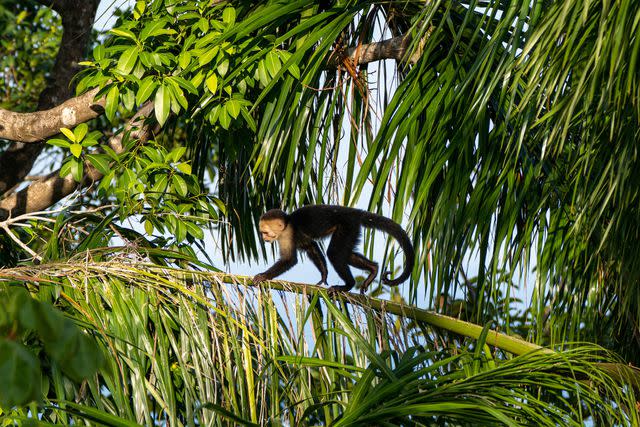
Getty Images
Located on the Pacific coast of Costa Rica, Manuel Antonio is the country’s smallest and one of its most popular national parks. The park includes beaches and lush tropical rain forest, with snorkeling and diving in coral reefs along its shores and hiking in the forest. Visitors can see sloths, iguanas, coatis, raccoons, and many species of birds, as well as howler, white-faced, and capuchin monkeys. With a guided tour, visitors can explore the rain forest along easy access trails for about three hours with an experienced, bilingual naturalist, certified by the Costa Rican Tourism Board. The closest major airport is San Jose, about a three-hour drive away. The town of Quepos, with hotels, shops, and restaurants, is about four miles from the entrance to the park.
Monteverde Cloud Forest Reserve
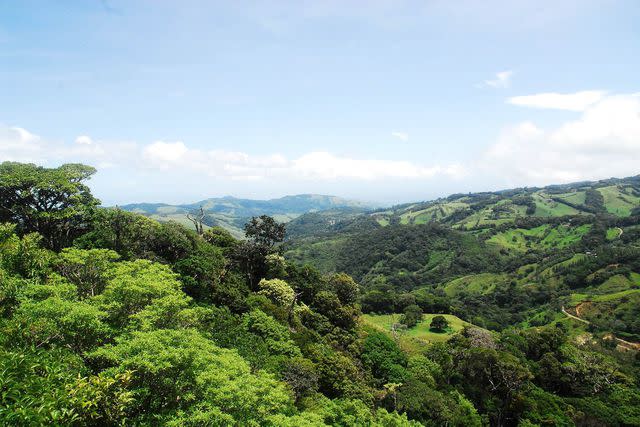
Jess MacDonald/Travel + Leisure
Monteverde Cloud Forest Reserve is located about four hours northwest of San Jose in the Tilaran Mountain range at an elevation of about 5,000 feet. Rich in biodiversity, Monteverde is home to more than 3,200 species of plants, 500 species of orchids, 425 species of birds, 120 species of mammals, 60 species of amphibians, and 101 species of reptiles. The reserve is open from 7 a.m. until 4 p.m, year round, and visitors can take tours or stay in the nearby town of Santa Elena, a short drive away. Night tours, zip lines, and hanging bridges let visitors experience an array of wildlife. The rainy season runs from May until November, with October the wettest month and March the driest.
Corcovado National Park
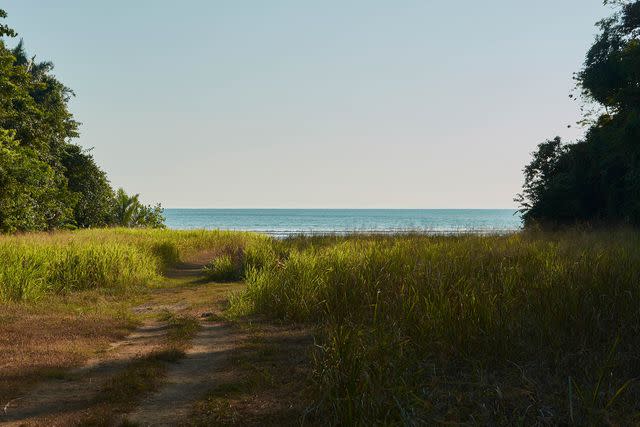
Javi J./Getty Images
Located on the Osa Peninsula in Costa Rica’s South Pacific region about 60 miles from San Jose, Corcovado includes cloud forest, lowland tropical rain forest, mangrove swamps, beaches, and waterfalls. One of the world’s most biodiverse places, Corcovado is home to more than 360 species of birds, 140 species of mammals, and 117 species of amphibians and reptiles. Scarlet macaws, harpy eagles, tapirs, crocodiles, and four species of monkeys — howler, spider, capuchin, and squirrel monkeys — live there along with anteaters, sloths, jaguars, pumas, and red-eyed tree frogs. Visitors should note that they need to have a certified licensed guide and an entrance permit in order to enter the park. The only place for overnight stays in the park is at the La Sirena Ranger Station on the Pacific Coast, and reservations are required. Outside of the park, visitors can stay nearby in the town of Drake Bay.
Cahuita National Park
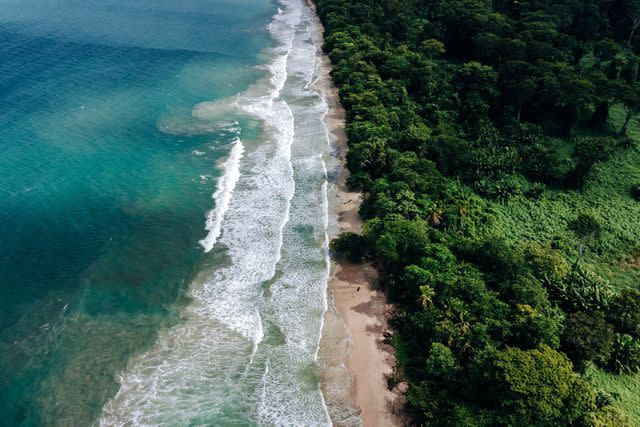
Getty Images
This national park includes tropical lowland wet rain forest, mangrove swamp, beach, and coral reefs. Located on the Caribbean coast, Cahuita protects more than 2,600 acres of land. A marked five-mile hiking trail through the forest is the only way to explore its abundant wildlife. Visitors can spot green ibis, herons, toucans, hawks, kingfishers, and the Central American curassow, a large pheasant-like bird. Coati, raccoons, sloths, howler monkeys, capuchin monkeys, armadillos, iguanas, lizards, and snakes also live in the park. The closest major town is Puerto Viejo, about 10 miles away, and the small town of Cahuita is within walking distance to the park’s entrance. Cahuita National Park is open every day from 8 a.m. until 4 p.m. From San Jose International Airport, the drive to the park is about three hours, and organized day trips are available.
Arenal Volcano National Park
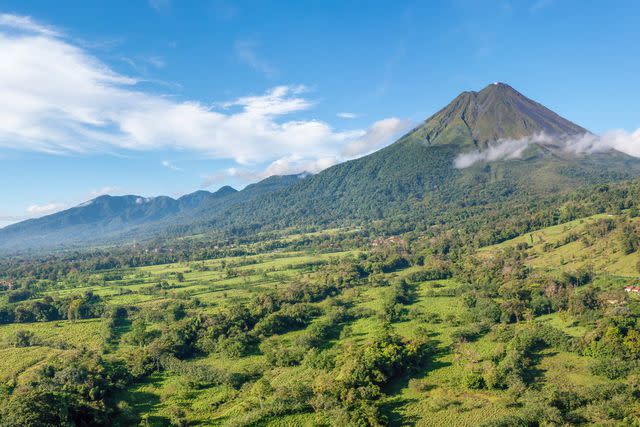
Caroline Brundle Bugge/Getty Images
Arenal National Park is located in the northwestern part of Costa Rica near the town of La Fortuna about three hours from San Jose. The park covers nearly 30,000 acres and includes an active volcano, Mount Arenal, and Cerro Chato, which has been inactive for more than three thousand years. Visitors can explore the park’s nearly 30,000 acres of rain forest in a variety of ways from hiking the trails to soaring over the canopy on zip lines or walking along hanging bridges among the treetops. For a relaxing tour, ride a Sky Tram gondola or float through the rain forest along the Rio Penas Blancas on an inflatable raft. More than 850 species of birds live in the park, including the colorful quetzal, and wildlife includes jaguar, monkeys, coati, tapirs, and deer. Day trips are available from the popular tourist area of Guanacaste.
Tortuguero National Park
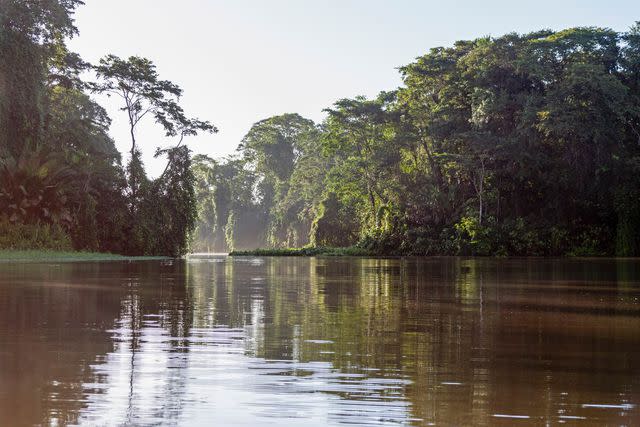
Norbert Achtelik/Canvan Images/Getty Images
This national park is unique in that there are no roads, and visitors explore its wildlife by boat along canals, rivers, lagoons, and mangrove swamps. Located on Costa Rica’s northeast Caribbean coast, Tortuguero National Park protects a large area of lowland tropical rain forest as well as the sea turtles that give the park its name. (Tortuga is the Spanish word for turtle.) The wet, humid area receives up to 250 inches of rain annually. More than 20 miles of coastline provide nesting areas for turtles, and the most common species, the green turtle, nests from June to October. Licensed guides take guests on night tours, with dark clothing and minimal lighting to protect the turtles. Visitors can also see birds, monkeys, iguanas, crocodiles, manatees, jaguars, and more. Flights are available from San Jose, or visitors can drive to La Pavona and then arrive at the park by boat.
Rincón de la Vieja National Park
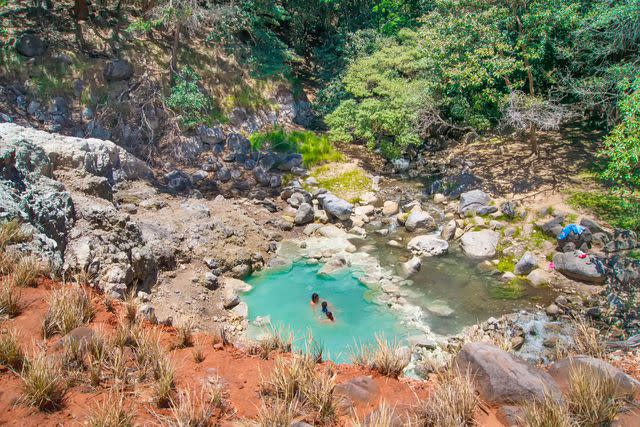
Kryssia Campos/Getty Images
In this ecologically diverse national park, a UNESCO World Heritage Site, you can see an active volcano, waterfalls, freshwater lagoon, rivers, hot springs, mud pots, and an array of wildlife. Less than an hour from Daniel Oduber International Airport in Liberia, Rincón de la Vieja includes a cloud forest, dry forest, savannah, lowlands, and rain forest. Sloths, monkeys, kinkajous, tapirs, deer, jaguar, and puma make the park their home, along with more than 300 bird species and an abundance of Costa Rica’s national flower, the guaria morada or purple orchid. Hiking trails, campgrounds, guided tours, horseback rides, white water rafting trips, river cruises, and zip lines are ways to explore. Many visitors end their days with a relaxing soak in one of the park’s hot springs.
Carara National Park
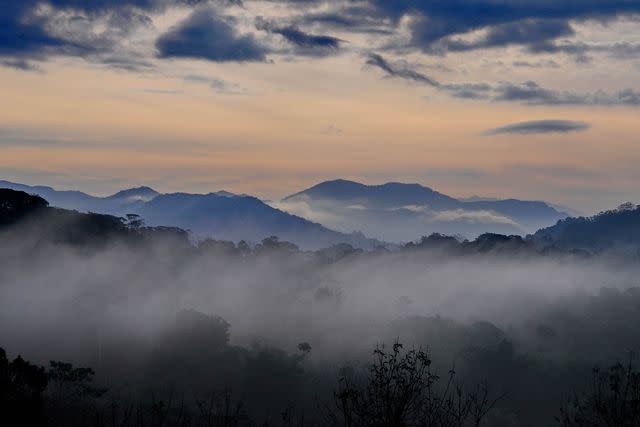
Bob Hilscher/Getty Images
Located about two hours from San Jose on the Central Pacific coast, Carara National Park is known as a great destination for birdwatching. As a transition zone between tropical dry forest and tropical rain forest, the park offers habitats for birds from both types of environments. Scarlet macaws, toucans, grebes, trogons, herons, and endangered species attract ornithologists and birdwatchers. Carara is also known for crocodiles which can be seen from Crocodile Bridge over the Tarcoles River, the northern boundary of the park. Sloths, howler monkeys, capuchin monkeys, armadillo, deer, and anteaters are among the park’s wildlife. The park is a convenient day trip from San Jose, and it features a universal access path and two hiking trails. Camping is not permitted in the park. During the wettest months from August to October, trails near the river may be impassable due to flooding.
Guanacaste National Park
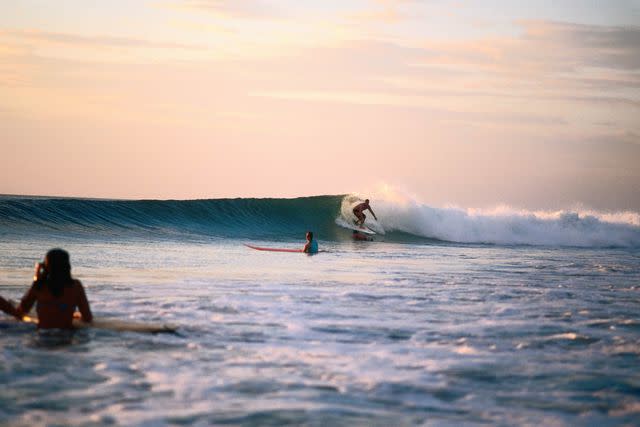
Aaron McCoy/Getty Images
This diverse park, located in Costa Rica’s northwest, connects Santa Rosa National Park with the high elevation cloud forest of Orosi and Cacao volcanoes. In addition to the cloud forest, the park includes a range of climate zones from dry forest to tropical rain forest. Visitors explore the park on its hiking trails, and wildlife includes monkeys, squirrels, deer, jaguars, mountain lions, along with a wide variety of birdlife. The nearest city is La Cruz, about a mile from the park’s Pitilla area. Restrooms, trails, and an information center are available, and with advance permission, visitors can hike to the top of the volcano. This part of Costa Rica is generally hotter, and the dry season goes from December to April.
For more Travel & Leisure news, make sure to sign up for our newsletter!
Read the original article on Travel & Leisure.

